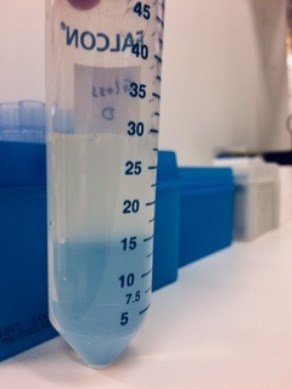Fakta:
Continuation from projects:
Increasing reproductive efficiency by improving sperm quality
The microbiome of bull semen

The purpose is to test whether Single Layer Centrifugation can be used to separate bull spermatozoa from bacteria in semen. This project is a continuation of two other projects.
As shown previously for stallion and boar semen, and subsequently to investigate whether a low density colloid could be used for this purpose without having a detrimental effect on sperm quality.
Hypothesis
centrifugation of bull semen using a high density colloid will enable spermatozoa to be separated from bacteria and robust spermatozoa will be selected. Use of a low density colloid will separate spermatozoa from bacteria without adversely affecting sperm quality during subsequent storage.
Relevance of the project
Globally there is concern about the spread of antimicrobial resistance. The emerging resistant bacteria are threatening our ability to treat common infections in the human population, resulting in prolonged illness, lengthier stays in hospital and requirement for more intensive care. Similarly, some infections in animals are proving to be difficult to treat because of resistance to antibiotics. The methods of preparing bull semen under investigation could either i) remove most of the bacteria from the semen without promoting antimicrobial resistance, at the same time as robust spermatozoa with a good fertilizing capacity are selected, or ii) separate spermatozoa from seminal plasma and most of the bacteria, if a low density colloid is used. Animal health, human health and the health of the environment would all benefit.
Financing
Partly financed by FORMAS from Jan 2018 to Dec 2021, extended to Dec 2022 because of covid, and partly by the Gustafsson and Whitmore Foundation, Oct 2021-Sept 2022.
Team
Jane Morrell, principle investigator Professor, Clinical Sciences
Alexandar Cojkic, PhD student, Clinical Sciences
Ingrid Hansson, assoc. Professor, BVF
Continuation from projects:
Increasing reproductive efficiency by improving sperm quality
The microbiome of bull semen